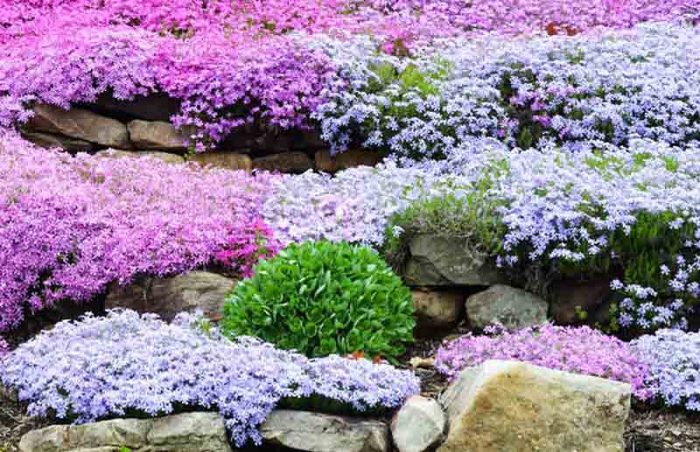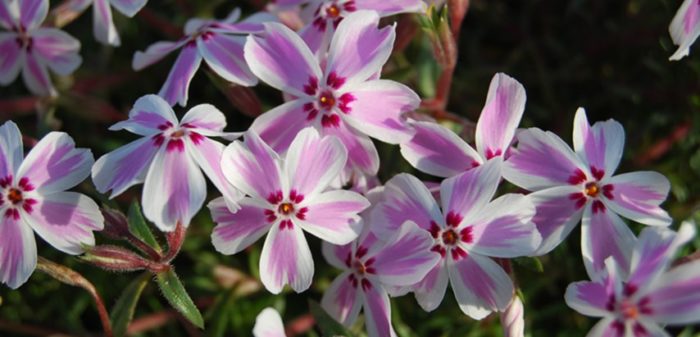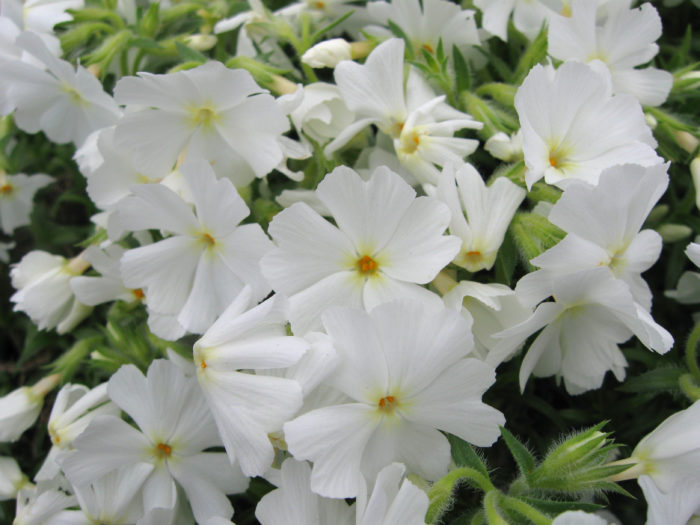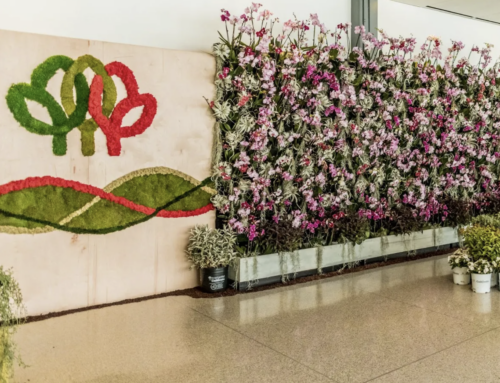In gardening design, especially when the goal is to reveal the most of a vivid color, grouping, or massing of the plant with that flower color, achieves the most impact. From my days working in theme parks, we resorted to this technique with large flowing beds of bright, bold colors. Also when designing for the hotel and lodging industry, we would refer to the use of plants that gave the “35 mph effect”. That is, when driving down the street, due to the number brightness of the flower colors, it couldn’t help but catch your eye.
As for the businesses that wanted to be noticed while cruising along the interstate highway, we would bump up or even double the number of plants to be eye-catching at 70 mph. As expected, we used lots of large, yellow African Marigolds, coupled with waves of red petunias and geraniums, call it the “Mustard and Ketchup Effect”, but hey, those colors paired have proven to work well for the Golden Arches.
I admired the quaint and charming small gardens my colleagues in horticulture were designing. Their careful selection of numerous plants for color, texture, and fragrance, were effectively appreciated at close range, as one might slowly stroll by. From their perspective of what we were planting, what we did was excessively gaudy and tacky. But that was okay.
We understood the sentiment, but we recognized how effective plants can be as a marketing tool for a business. Even the finest of the exquisite, perennial gardens they were designing, couldn’t beat a bug on the windshield for visual attention while rolling down I-75 at 70 mph and if in Michigan, 80+ mph. Once asked if the flowers we were using were fragrant, I simply said, “I’m not sure, I usually don’t stick my head out the window when driving 75 mph.”

Photo: Gardenia.net
That somehow brings us to the featured plant, Creeping Phlox (Phlox subulata). There are not many perennial flowering plants that come to mind that create bright and bold patches of solid colors, that are acceptable in fine gardens, as the Creeping Phlox. When in full flower, Creeping Phlox is truly eye-catching at whatever speed you are traveling or walking by. The low growing, mat-like flowers smother the green foliage of the plant and all that is visible are the colorful blooms. The height varies from only 4-6” and spreads nicely to 1-2’. It does well in full sun but can tolerate dappled shade.

Photo: Costa Farms
Unique and special features of Creeping Phlox:
- Remarkably, it has a range of temperature tolerance from Zone 3 (think Canada) to Zone 9 of Florida.
- Surprisingly it is a native species, found growing in Ontario down through the Appalachians mountains and into the Carolinas.
- In most areas, its green foliage remains evergreen through winter months.
- Creeping Phlox is a spring-bloomer and flowers come in red-purple to violet purple, pink, and white.
- Depending on your geographical location, blooms March to May
- Considered by many as the most colorful ground cover.
- Is impressive when planted to drape over walls or down through boulder hillsides
- Loved by butterflies and hummingbirds
- Deer seem to leave it alone
Creeping Phlox water needs are relatively low and thus a good fit in rock and alpine gardens with slopes and well-drained soils. In closing, of the flowering perennials that are bold and impactful at bloom-time, most spend the rest of the year looking tired, spent, or at best, bland. Creeping Phlox is different and has a pleasant appearance as a moss-like spread of green foliage that complements surrounding plants.

Photo: GPN Magazine
-Rob McCartney, Horticulturist
Please feel free to contact me with any questions or for more info at: [email protected]
Connect with us on social media!
Instagram | Facebook | Twitter | Website




